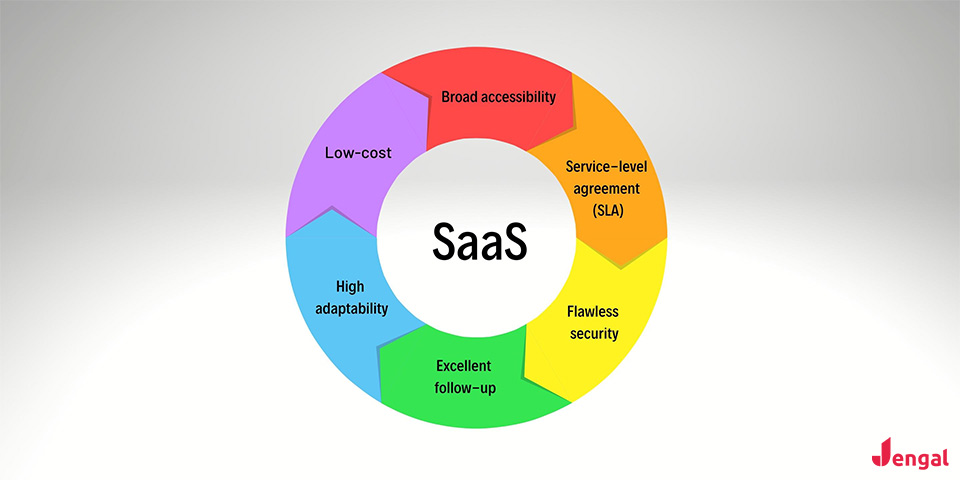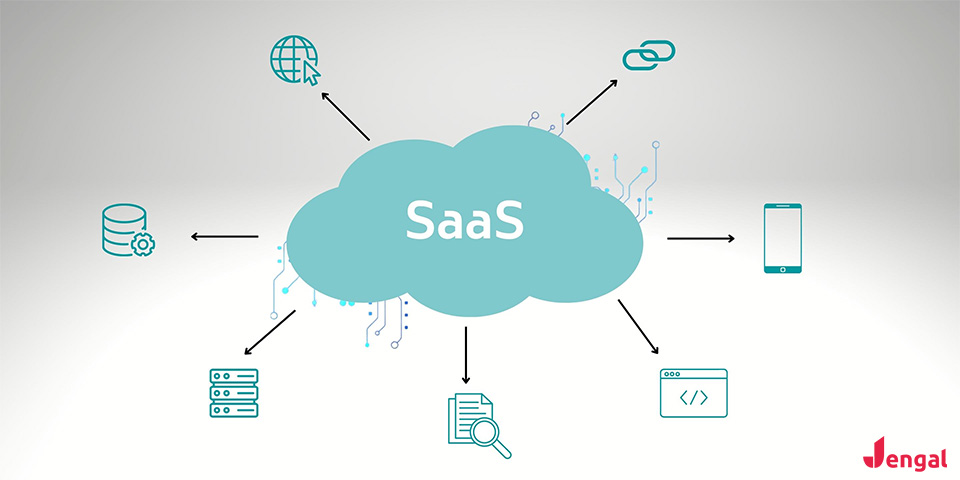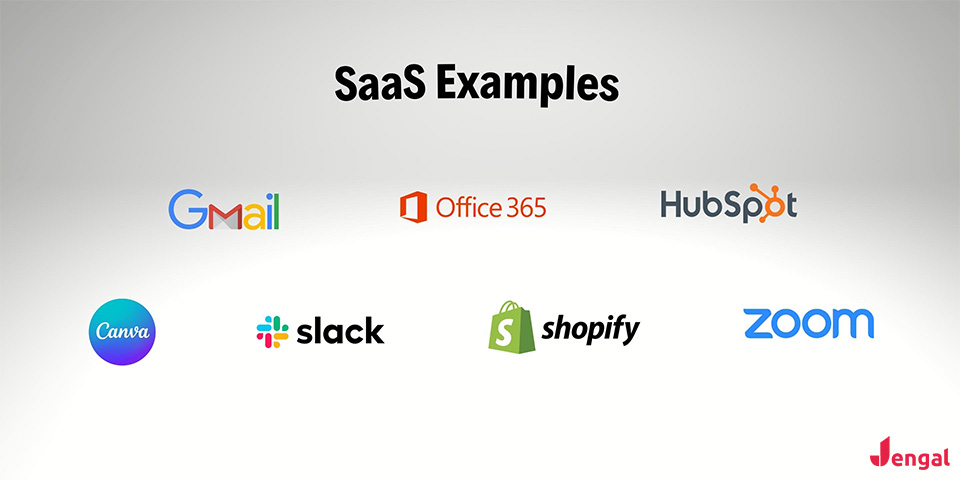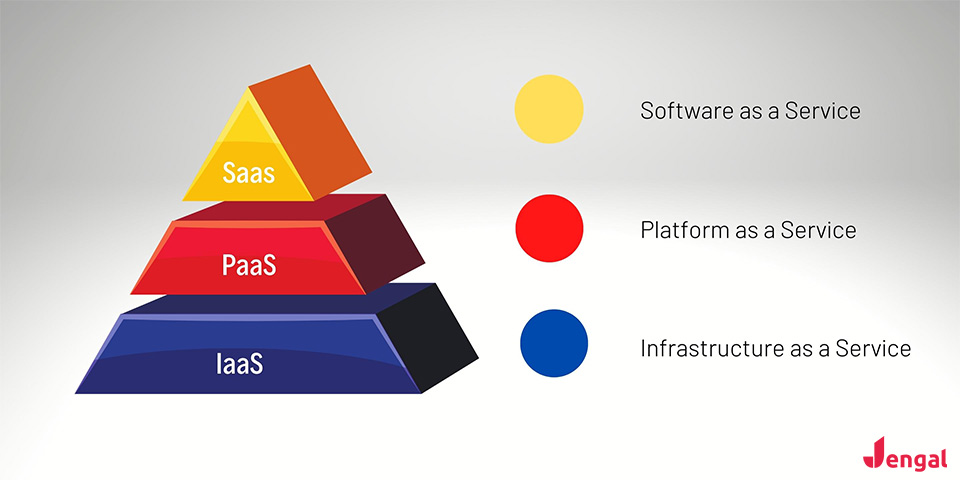If you are somewhat involved with the digital world, you must have heard of SaaS software by now. In today’s article, we will expose the main characteristics of what is already labeled as the technology of tomorrow. It’s indeed an asset that has revolutionized the way we used to conceive the concept of software itself.
It probably makes sense that we start by defining software as a service, which is the full name of SaaS. Then we should try to understand why it’s essential and what advantages you can expect from it. We should also look at the general functioning of this futuristic model through an overview of its structure. Our goal here is not only to make things sound less cryptic, technically speaking. What really matters to us is that you become able to envision what this system can bring to your business and any other projects. Let’s say for now that you will have the opportunity to meet a true resource saver (beginning with your money). Want to judge it by yourself? Just keep scrolling.
Table of Contents
What Is SaaS Software?
Software as a service, abbreviated as Saas, is a cloud-based software distribution system. Unlike the typical scenario in which users download a given software to utilize it, this system is integrated into the internet. So it’s like a shortcut that makes you benefit from software applications directly online. That’s why Saas is also known as hosted, on-demand, and/or web-based software. Since everything is handled within an autonomous network, you no longer have to worry about software and hardware management. Handy, isn’t it? SaaS software appears to be, above all, a time- and space-saver. Not to mention that it also has a positive effect on your budget. Those arguments are already convincing enough and play in its favor. Let’s, nonetheless, explore further the goodies it has to offer.

Advantages of SaaS
- Broad accessibility: This is one of the most remarkable features of the SaaS model. As long as you have a connectable device (PC, laptop, smartphone, tablet, or else), you can use the software almost anywhere imaginable.
- Low-cost: The SaaS technology is also fabled for its budget-friendliness. It’s available for minimal cost. You don’t have to pay a fortune to set it up.
- High adaptability: You can easily adjust the system to the number of people who need to work on it at a particular time. The same goes for the volume of data as well as the main functions. You are free to make them compatible with your own specific tasks.
- Excellent follow-up: SaaS software is frequently updated. SaaS providers pay close attention to every customer feedback and work on their scale accordingly. So while you don’t have to worry about any possible obsolescence, you also save time for your own business matters.
- Flawless security for everyone: Remember that any Saas service is a shared one. This means that you benefit from the level of security offered to other users, including the most demanding ones in that regard.
- Constantly improved service-level agreement (SLA): The type of SLA set for SaaS is a highly ambitious and well-defined one. In other terms, you get the guarantee of always knowing what you will exactly receive. Plus, it’s frequently revised to ensure up-to-date service delivery.

How Does It Work?
First of all, it eliminates the need to invest in an information technology (IT) infrastructure. Indeed, while those on-premise tools are must-haves for traditional software functioning, they have become history in the SaaS environment. That’s because everything is managed remotely with SaaS software. However, it’s highly recommended that you invest in good network material. The speed of your connection has a direct impact on the quality of the service. Most complaints are due to defective internet connection on the user’s end, independently from the SaaS companies.
But what are some concrete forms of this system? Among the most renowned SaaS examples, let’s cite application service providers (ASPs) such as Microsoft Office 365. Additionally, e-commerce platforms, human resource and customer relationship management tools, and integrated development environments (IDEs) largely rely on SaaS.
The whole system is multitenant, meaning that it’s capable of serving multiple user groups from one central ‘station’, so to speak. This is possible through either the provider’s own data center or a public cloud service supplier (e.g., IBM Cloud). All the SaaS solutions (related to upgrades, troubleshooting, etc.) are managed from there. As for the users, they access every property of the software simply through their web browser. The system is thus usually self-sufficient. Aside from the software and app, it also takes care of anything related to the hardware and middleware. However, some cases may require extra support from application programming interfaces (APIs) like SOAP or REST.

SaaS Examples
Let’s dive into the popular examples of SaaS software that have achieved phenomenal success and discover how the SaaS industry has gained rapid and substantial growth in recent years.
Gmail
As an online email service, Gmail is one of the best examples of SaaS. In the simplest terms, the reason it is defined as a SaaS is that users are not hosting their own email server, but Google does it. You don’t need to run or install any application and need no installation files. The cloud system stores everything you need, and all you have to do is access it through any device.
Microsoft Office 365
It is another example of SaaS, providing widely-used tools such as SharePoint Server, Exchange Server, Lync Server, Email, Microsoft Office Suite, Microsoft Teams, and Outlook. Since the cloud stores the data, users can access their information anywhere through an internet connection.
Hubspot
It is a CRM (Customer relationship management) software that helps companies gain an inbound presence and attract new leads to their business. The software also offers social media marketing and content management, providing products in every stage of the SaaS business model. Hubspot covers and integrates many features, being a complete solution for businesses and an excellent SaaS example.
Canva
With over 75 million monthly active users, Canva has become of the most valuable private software companies. The software is built for non-designers and provides templates to create infographics, social media graphics, posters, documents, and other visual content. It has an extremely easy-to-use interface, which helps businesses save time while providing them with designs looking professional. The software is cloud-based, which means it holds all of your files in the cloud without giving you any chance of losing them.
Slack
Slack is another outstanding SaaS example, as a business communication platform. It offers many features such as chat rooms organized by topic, group discussions, and direct messaging with file sharing options. It makes emails and messaging apps meet on common ground, being neither too formal nor too informal.
Shopify
It is a cloud-based SaaS software that allows users to set up an online store, giving them complete control over their website, with a highly user-friendly interface. It takes only 30 minutes to build an online presence for retailers who want to sell their products online.
Zoom
We can all agree that the Covid-19 pandemic has been a milestone for Zoom, which provides a virtual meeting platform for various purposes. Be it distance education, remote work, or personal meetings; it is undeniable that Zoom has become an essential part of our daily lives. Serving an average of 300 million active users daily, the software provides simple-to-use features such as screen sharing, live chats, and admin control. It is backed by a cloud platform and has a very easy-to-use interface.

As a Service: A New Way of Life
Before labeling our title as exaggerated, just think of some daily life examples—for instance, music or movies. Honestly, how many of you still bother buying CDs or DVDs or even downloading anything? That’s right: the previous as-an-equipment era has turned into an as-a-service era. So along with SaaS software, you probably notice other ‘aaS’ types around. There are three primary types of cloud computing ”as-a-service” alternatives, and each one covers a different degree of management.
Artificial intelligence (AI) is a system that enables machines to perform human-like tasks, learn from experience and adapt to new inputs. However, ev...
Software development has become an important and indispensable profession with the advancement of technology day by day. Software goes beyond sectors,...
While SaaS is the most comprehensive form of cloud computing services, also PaaS and IaaS have a considerable amount of use. The three models have key differences, advantages, and disadvantages. We’ll cover how they differ from SaaS and explain their primary features.
PaaS (Platform as a service)
A fave for developers and programmers. Indeed, it offers a hardware-backed platform from which users can craft and control their apps without needing any other infrastructure or material. In other words, you have your platform served on a tray. The delivery model of PaaS is similar to SaaS; however, PaaS provides a platform for software developers to create, while SaaS delivers the software over the internet. PaaS is a popular choice for businesses that want to develop applications without spending a lot. It doesn’t require extensive knowledge of system administration and reduces the amount of coding needed. It is highly available, scalable, and it provides a simple and cost-effective development of applications. Note that PaaS may come with a few drawbacks, such as the lack of data security, integration challenges, runtime issues, and operational limitations. Google App Engine, SAP Cloud, Heroku, and AWS Elastic Beanstalk are some examples of PaaS.
IaaS (Infrastructure as a service)
So, speaking of infrastructure, we got this one. In IaaS, a provider typically handles everything on your behalf through a cloud. The service includes server management, network control, storage, and virtualization (among others). While the users manage their application and operating system, the provider remains available for technical support. It is also responsible for repairs and hardware problems. However, as opposed to SaaS or PaaS, IaaS clients are responsible for managing aspects such as applications, runtime, O/S, middleware, and data. It is the most flexible cloud computing model, easy to automate, and highly scalable. The main drawbacks to IaaS are provider security issues, service reliability, and multi-tenant security problem. Examples of infrastructure as a service are Microsoft Azure, Google Compute Engine, Digital Ocean, and Linode.

What SaaS Software Promises for Our Future
SaaS software will above all, keep lifting some serious load off businesspeople’s shoulders. Companies will be able to better focus on their core practices and let SaaS providers take care of the rest. In fact, cloud-based services might soon become the norm, considering the ever-increasing volume of data that needs to be processed.
Too Long; Didn’t Read
For TL;DR lovers, let’s sum it up by saying that it’s high time to adopt SaaS software. Available from any connectable device at the lowest cost possible, this cloud-based system is the ultimate bridge between you and your applications. As long as you have an internet connection that runs properly, SaaS frees you from all the traditional software burdens. In fact, you have probably been using it without necessarily being aware of what it was so far. Hopefully, you have a clearer picture in your mind after this article.




No comments to show.